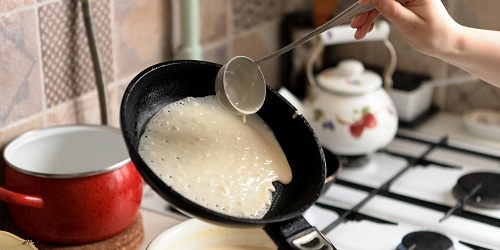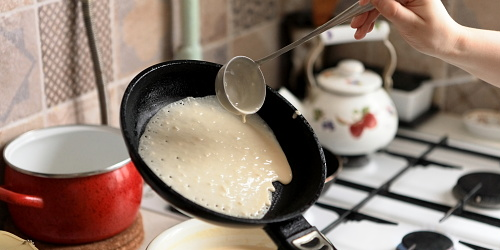Making the Perfect Crêpe
A dollop of Nutella and slices of banana make for the perfect crêpe filling, at least according to Mathieu Sellier of the University of Canterbury in New Zealand. Edouard Boujo, who works at the École Polytechnique in France, smothers his in chocolate, nothing else. While the two disagree on what should coat these batter-based desserts, they concur that the crêpe itself should have a uniform thickness. Challenged by Sellier’s wife to use their physics expertise to suggest the optimal way to cook a crêpe, the duo finds that it requires inclining the frying pan and rotating it in circles.
To make a crêpe, a thin, flour-based batter is poured into a hot frying pan, which is then jiggled around such that the batter spreads out and fills the pan. But twist your wrist the wrong way and a lumpy, uneven crêpe forms.
To find the optimal pan motion for making perfectly flat crêpes, Boujo and Sellier turned to “optimal control theory,” a tool that allows for efficient computation of how some quantity—in this case, crêpe thickness—depends on another, for example pan motion. Their model accounts for the batter’s flow around the pan and the steady increase in its viscosity as it cooks. They recommend the following steps for flawless crêpes. Right after placing the batter into the pan, incline the pan steeply in one direction so that the batter flows from the pan’s center to its rim. Next, rotate the inclined pan in a circle—this step ensures that the batter coats the pan’s full circumference. Finally, while continuing the circular motion, decrease the pan’s incline, filling in any holes, until the pan is horizontal and the batter is cooked.
While Boujo notes that the predictions are helpful—but not essential—for making crêpes, he says that his and Sellier’s frequent crêpe-making “experiments” to confirm the predictions have delighted their daughters.
This research is published in Physical Review Fluids.
–Katherine Wright
Katherine Wright is a Senior Editor of Physics.





